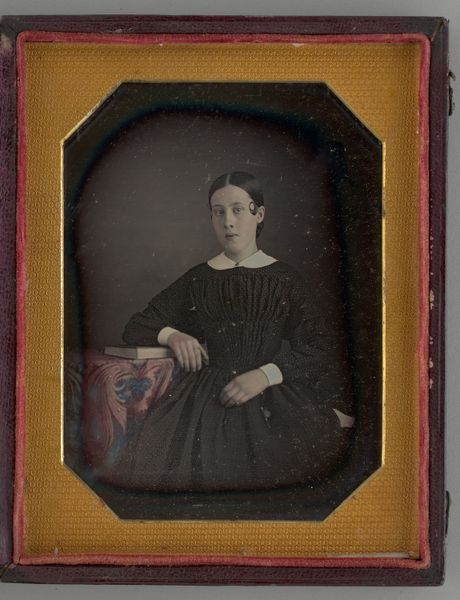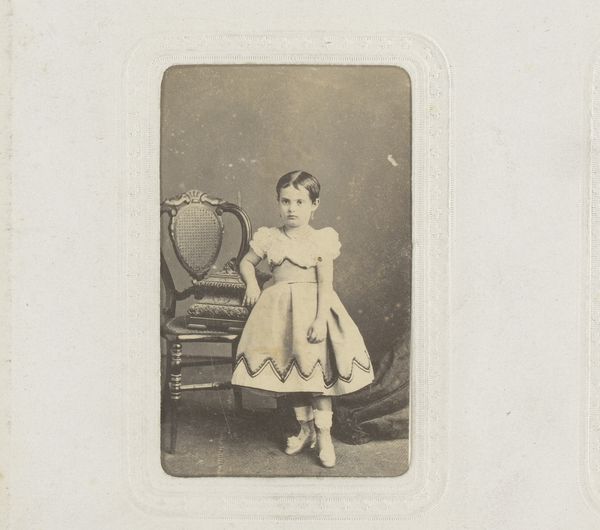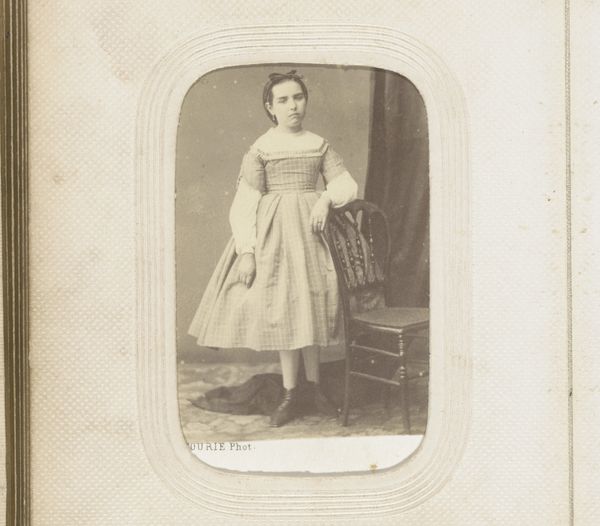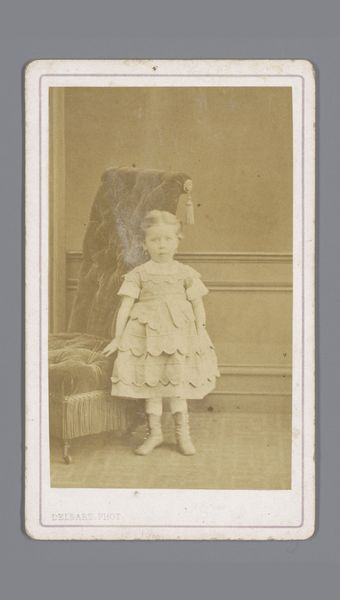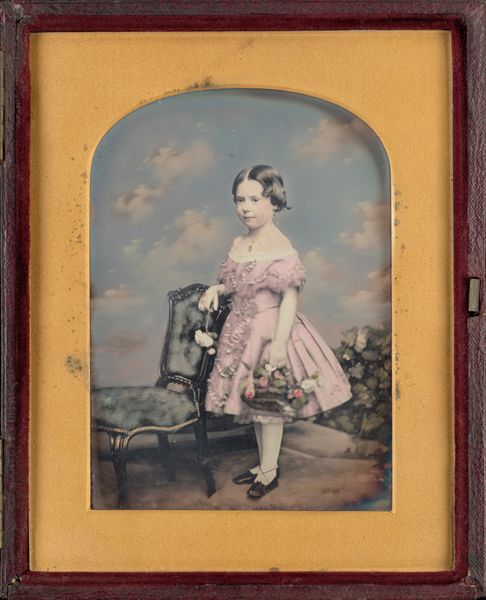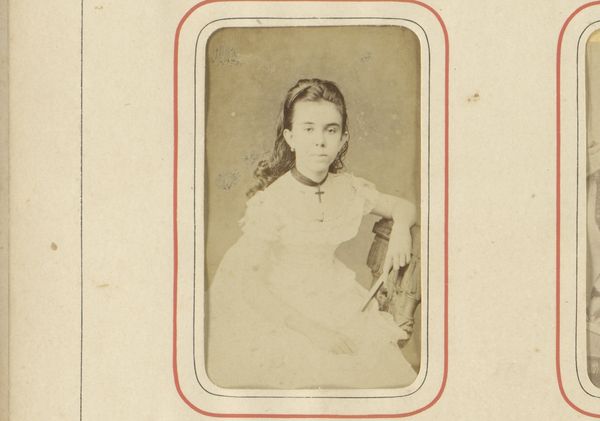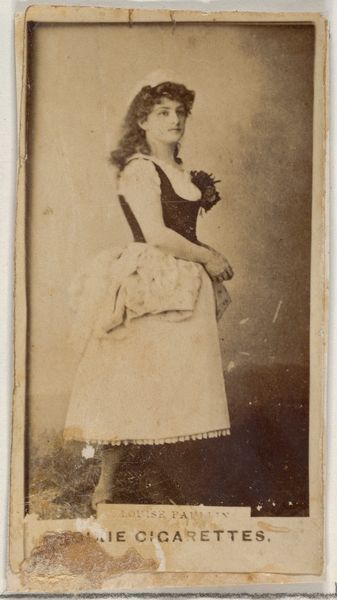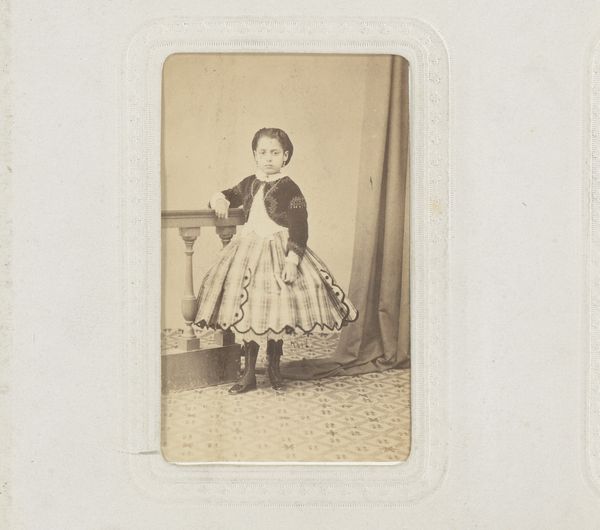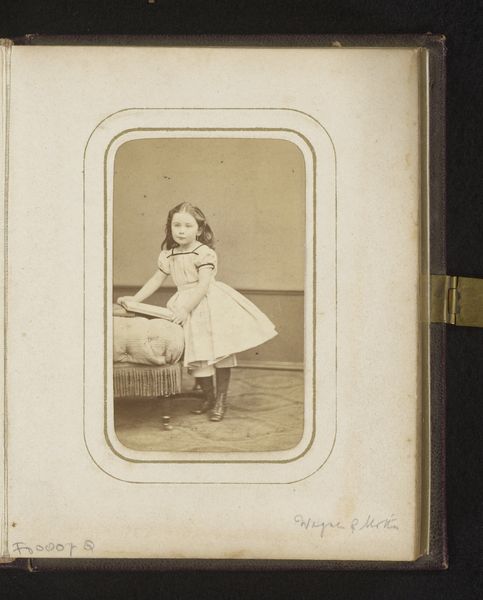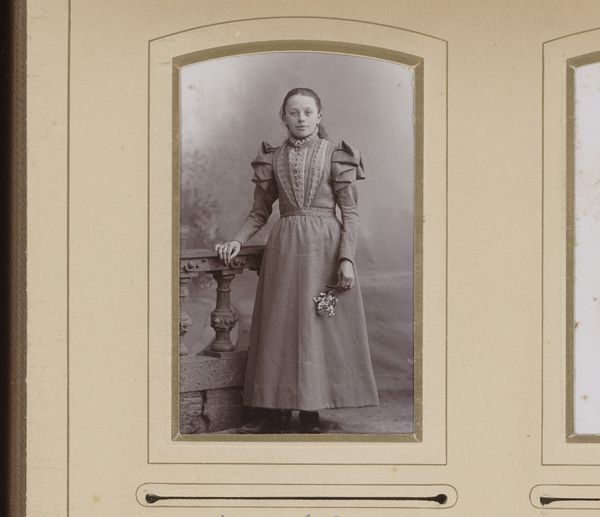
daguerreotype, photography
#
portrait
#
16_19th-century
#
girl
#
muted colour palette
#
daguerreotype
#
photography
#
19th century
#
united-states
Dimensions: 8.1 × 7 cm (3 1/4 × 2 3/4 in., plate); 9.2 × 15.7 × 0.9 cm (open case); 9.2 × 7.9 × 1.3 cm (case)
Copyright: Public Domain
Curator: This is an untitled daguerreotype, "Portrait of a Girl Holding Flowers," made around 1847 by an unknown artist. The image feels so still and composed. What are your initial thoughts? Editor: I'm struck by how formal it is. The little girl seems self-conscious, like she’s trying to be a proper lady, and the flowers she holds don't seem joyful, but add to the staged effect. What do you see when you look at this portrait? Curator: I think it's impossible to ignore the socioeconomic implications embedded within such a photograph from this period. The daguerreotype, while revolutionary, was not widely accessible. It speaks to a certain level of privilege. Her dress, while simple, is carefully made. This image signifies a family’s conscious decision to participate in early photographic practices. Does this formal composition perhaps reveal something more about 19th-century ideals surrounding childhood? Editor: That makes sense. So it's not just a cute portrait, it reflects a family’s status and aspirations, even the prevailing views on childhood at the time? Curator: Precisely. And what about the flowers themselves? Floral symbolism was rampant in the 19th century, functioning almost as a language. Though indistinct, they represent a cultivated sensibility, and an engagement with notions of feminine virtue and beauty. They serve not just as adornment, but as a form of visual encoding. Do you think this portrait perpetuates or challenges conventions, considering it’s by an unknown artist, possibly even a woman? Editor: It's hard to say without knowing more about the artist, but the stiffness might suggest adherence to societal expectations rather than a subversion of them. The portrait as a cultural construct preserving and promoting the expected image of young girls. Curator: Exactly. It invites us to reflect on whose stories are told, and how. Even an image as seemingly straightforward as this opens up fascinating dialogues about power, representation, and the very act of seeing. Editor: I’ll never look at an old photograph the same way again! It's like opening a window into a whole world of social and cultural meanings.
Comments
No comments
Be the first to comment and join the conversation on the ultimate creative platform.
